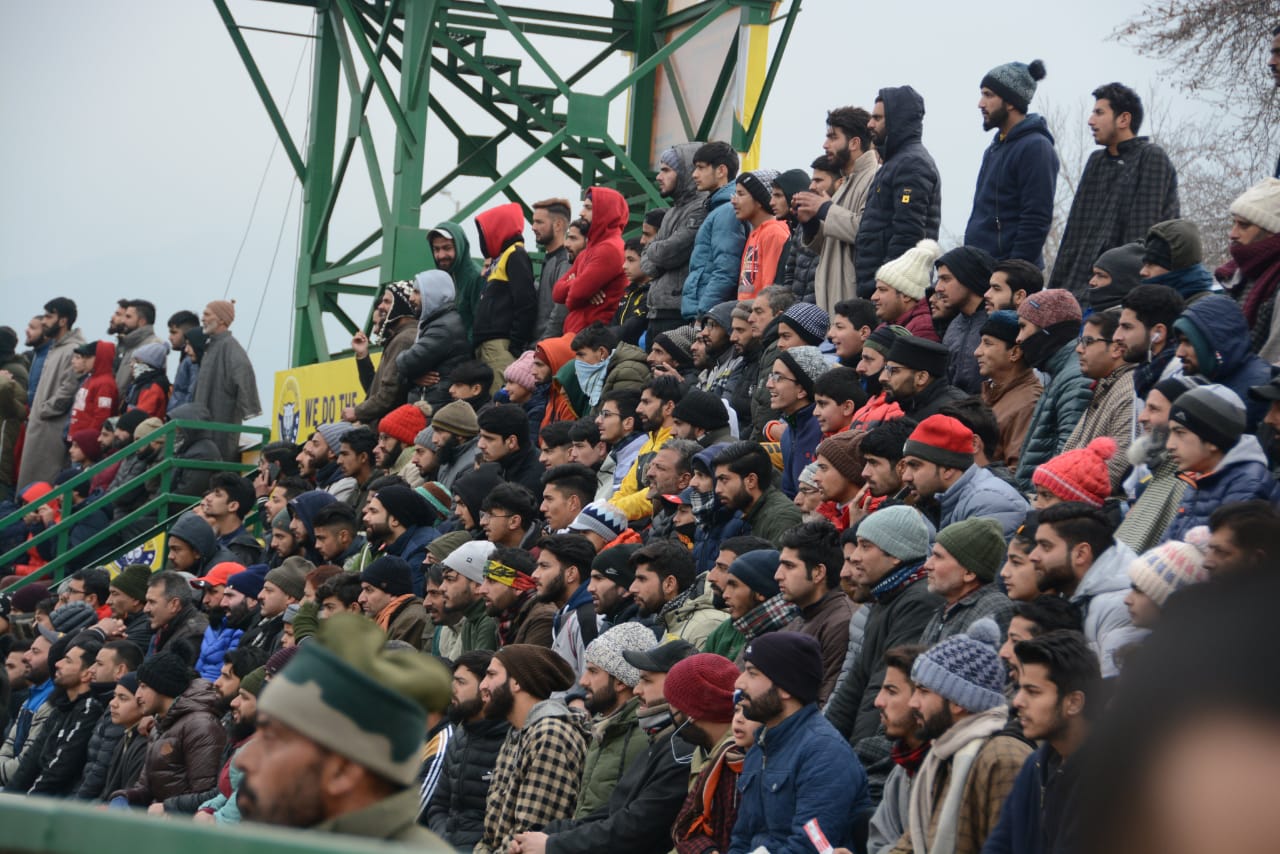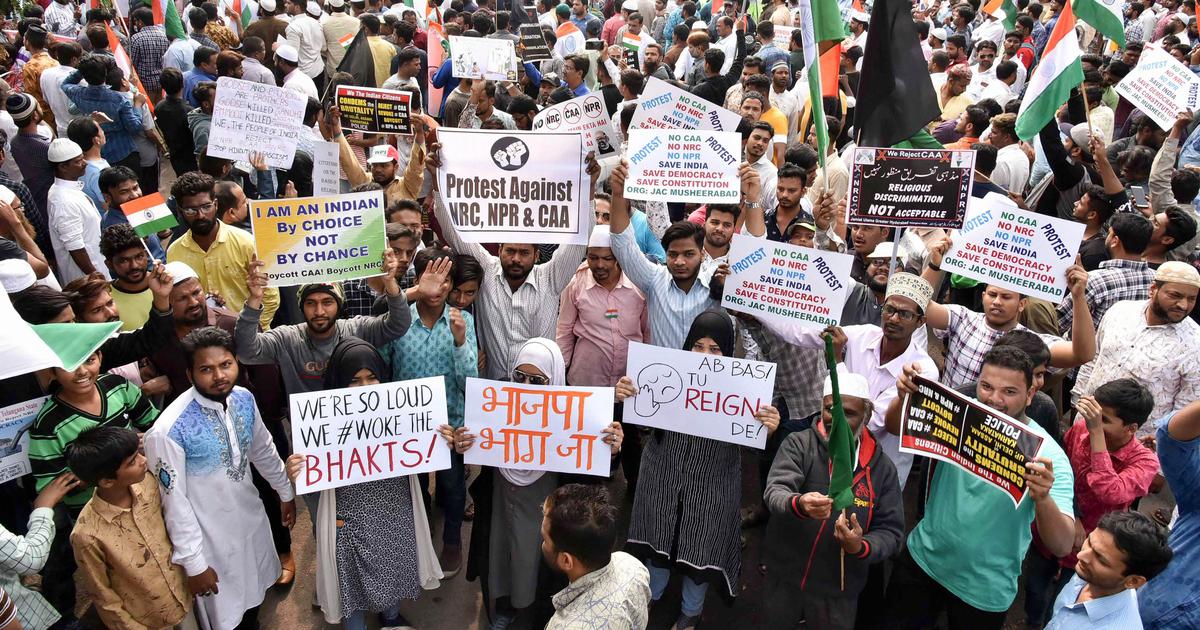Monitoring Desk
Article of Joe Athialy “Nine myths about India and Indians that the CAA-NRC protests have busted” brings hope for Civil Right activists
There is no doubt that mainstream media of India is facing Modi Godi Media (“Godi” means lap in Hindi) Situation but emerging media and some of mainstream media outlets also stood against insane and inhuman acts conducted by Modi Sarkar.
There are still dissident voices coming from media outlets like Scroll.in and writers like Joe Athialy.
After his last excellent piece “The injustices of Narmada Valley are being repeated across India – from Kashmir to Assam” published in Scroll.in November last, Joe Athialy has written another powerful article “Nine myths about India and Indians that the CAA-NRC protests have busted”.
His article says that myths are broken and now people understand that Indian Prime Minister Modi is assailable, young people are very much interested and active in politics and the most important —a ray of hope for activists that the age of street protests is yet Not over.

DND is reproducing his article with direct link to original publication for ready reference to its readers that Civil Right Activism is yet to dead.
Reproduction of article is hereunder:
The protests in the wake of passing the Citizens Amendment Act and the planned National Register of Citizens are unique for a number of things. These include the absence of a centralised leadership, the enormous crowds at many of the demonstrations, the number of protests and the frequency with which they are occurring, the brutality of the crackdown by the police in some places, and the innovative and creative ways in which dissent is being expressed.
These protests are mainly led by youth and students, notably young women, the first time since Independence that this has happened on this scale. (wWhile the Nav Nirman movement and JP movements were also youth-led, they were confined to mostly Gujarat, Bihar and Hindi heartland and did not spread to the North East and South India, like today’s protests have.)
Despite boasting about plans for Digital India and how the country has the world’s second-largest internet users, this is the first time that the state has used internet shutdowns as a tool so widely to quell dissent and suppress protests . This is in addition to the five-month long internet shutdown in Kashmir, something that has never has happened anywhere in the world before.

These protests have also busted many myths. Here are some of them:
Modi-Shah are unassailable
There Is Modi Only or TIMO, as one author puts it, was the resounding message of 2019 elections. It took only six months for that notion to get frayed. The combine of Prime Minister Narendra Modi and Home Minister Amit Shah – once hailed as “forward thinking” politicians who have their finger on the voters’ pulse” more sensitively than anyone else – has been exposed for their sinister designs and divisive agenda. Modi’s fallacious claim that his government had never discussed an NRC was never discussed is a sign that the protests have started weakening the bubble he meticulously created around himself.
Protests need a central leadership
Protests are generally perceived to need a central leadership, with a single message and directions given from a “control room”. The current protests have proved this wrong. Nobody knows the number of protests happening all around the country. They are happening in big cities, small towns, villages, and even residential colonies in some cities. They are happening during wedding receptions, graduation ceremonies, Christmas carol services and on other unusual occasions.
Political protests are boring
When ordinary people think about political protests, they imagine long speeches, rhetorical sloganeering and protests in designated places. These protests have broken the template. From using humour and sarcasm, artistic expressions to political sloganeering, from short videos to parodies of popular movie clips, the demonstrations have seen an unique mix of innovative strategies and creative political messaging.
The Indian middle class fully supports Modi
It’s a cliche that the Indian middle class is apathetic to politics and concerned only about their material wellbeing. They are believed to be Modi devotees. These protests have proved that it’s not the same anymore. Middle-class Indians are finally running out of patience, not just with Citizens Amendment Act and the planned National Register of Citizens but with the country’s crashing economic indicators. They are visible in large numbers at nearly all the protests.
Youth are only interested in their future careers
Despite many examples to the contrary (including the Independence struggle, the JP movement and the Naxalbari movement), many insist that India’s youth are focussed only on their careers and are indifferent to politics. This isn’t true. Not only are young people participating in the protests, they in fact are leading them.
No one can beat the Hindutva social media strategy
While the Bharatiya Janata Party’s thousands of paid social media workers are unmatched for their numbers and money power, these protests have shown how the same social media, when used carefully, be a potent weapon to mobilise and coordinate protests, despite the state trying to partly shut down internet in some cities and completely in some other.
Party manifestos don’t need to be taken seriously
Party manifestos, at best, have been an intellectual exercise for most of the political parties, not taken seriously. Except for isolated attempts, there have been no political or civil society initiatives to hold parties to account for what is written or missing in manifestos before or after the elections. Not any more. With Amit Shah justifying the abrogation of Article 370 of the Constitution which gave Kashmir special status and moving the Citizenship Amendment Act by noting that this had been promised in the BJP manifesto, it would serve voters well to scrutinise manifestos closely hereafter.
Indian society is so polarised, we won’t stand up for each other
The concerted effort by the Rashtriya Swayamsevak Sangh and its political wing, the BJP, over the years have been successful in creating significant rifts between between India’s communities, especially Hindus and Muslims. While it is too early to say that communal harmony is restored, there are signs that many Indians have seen through the divisive tactics of these Hindutva groups. Among the signs that the climate is changing: stories of Hindu friends standing guard for Muslims while they are offering namaz during protests and in the curfew-hit Uttar Pradesh, Hindus forming a safety ring around a Muslim wedding procession, or a church choir reacting to Modi’s barb about being able to identify protestors “by the clothes they wear” by wearing Muslim attire.
The age of street protests is over. Now it’s about managing public opinion through better public relations
After the 2014 elections, mainstream politics seemed to have become a public relations exercise, with event management and marketing companies being engaged by parties to run their campaigns. They framed slogans like Chai pe charcha, Abki baar Modi Sarkar and Lage raho Kerjiwal. These were choreographed for different audience and mediums of communications, making politics more of a spectacle. Street protests becoming a dirty word. That explains why parties and party leaders express their dissent on Twitter, but are rarely seen on streets. The protests against the Citizenship Amendment Act and National Register of Citizens have reclaimed that lost space. No longer are protests confined to enclosed areas designated by the police, which have to be wound up by 6.30 pm. Whether prohibitions against the public gatherings are in force or not, protestors are reestablishing their voices across India.
Note: The author of this article Joe Athialy is a social activist based in New Delhi.
